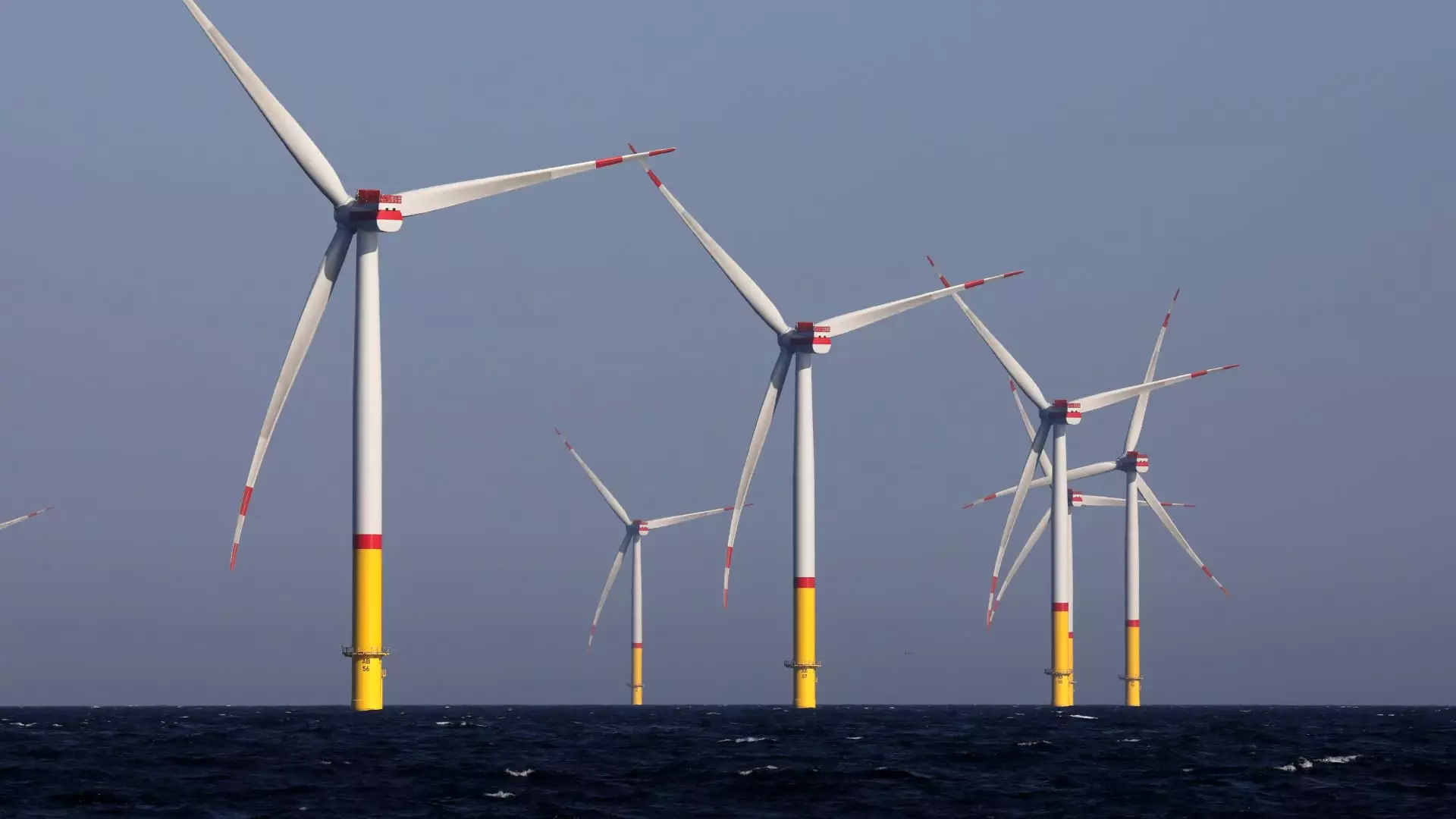The recent resurgence of construction on the Empire Wind 1 project, spearheaded by Norwegian energy giant Equinor, underscores the tumultuous relationship between politics and renewable energy initiatives in the United States. This project is not just another offshore wind farm; it’s a significant milestone for New York City, as it aims to deliver electricity directly to the bustling metropolis. The lifting of the halt order by both the Trump and Biden administrations exposes the vulnerabilities of renewable energy projects in the face of political maneuvering. This situation brings to light the stark contradictions within American energy policies—while some administrations push for a future powered by clean energy, others seem determined to stall its progress.
The Biden administration approved this pivotal project after Equinor secured a lease from the Interior Department in 2017. However, just last month, the project was halted amid accusations from Interior Secretary Doug Burgum that the approval process had been rushed and lacked adequate analysis. Such a back-and-forth creates a sense of instability that reverberates throughout the energy sector, making it clear that when politics intrudes into energy planning, the consequences can jeopardize both jobs and investments.
Union Jobs vs. Political Retaliation
New York Governor Kathy Hochul emphasized the project’s potential to support 1,500 union jobs, a remarkable prospect amidst rising discussions about job creation in the renewable sector. The very survival of these jobs, however, seems to hang in a precarious balance dictated by political whims. Hochul’s conversations with Trump officials to revive the halted construction illustrate a disturbing trend: decisions that should ideally focus on the environment and economy at large are often swayed by political allegiances.
The irony is striking—one administration champions the creation of blue-collar jobs through green initiatives, while the other throws a wrench into the works, exploiting energy projects for political posturing. The potential economic gains from projects like Empire Wind cannot be overlooked, yet they become casualties of a broader political game where the ultimate winners are those who have mastered the art of political pandering rather than genuine energy leadership.
The Cost of Inaction
As Secretary Burgum noted, Americans in New York and New England are poised to reap the benefits of increased access to reliable and affordable energy through this project. However, the lingering fear of further interference from the White House hinders investment confidence in the sector—a dangerous precedent. The uncertainty surrounding the Empire Wind project raises critical questions about the future of other renewable energy projects in the pipeline.
The financial aspects are equally concerning. Equinor has poured approximately $2.5 billion into Empire Wind 1, and the company plans to construct towering turbines capable of generating 810 megawatts of electricity. Yet, when political dynamics are at play, investments become questionable. The risk of further backtracking by political authorities has created an environment where companies like Equinor must tread carefully, fearing potential delays or cancellations on future projects, which could ultimately deter public and private investment in renewable energy altogether.
Environmental Integrity vs. Political Narratives
Interestingly, while Hochul pushed for the advancement of wind energy, natural gas remained a contentious issue in her statements. New York has established a reputation for opposing new gas pipelines, and it begs the question: can we genuinely advocate for renewables while simultaneously casting suspicion on alternative energy sources like natural gas? Burgum’s remarks about the necessity of “clean American natural gas” as a complement to renewables provoke a constructive debate on energy diversification.
The discourse tends to paint wind energy proponents as champions of the environment, while critics argue that transitioning away from fossil fuels blindly can raise new environmental concerns. Trump’s previous executive orders, which aggressively targeted the wind industry, have left a scar on the fabric of renewable energy discourse. Ultimately, a balanced approach—unrestricted support for wind energy coupled with responsible consideration for natural gas—might pave a more sustainable path forward.
The Need for Strong Leadership
The saga of Empire Wind 1 serves as a poignant reminder of the critical need for leadership that prioritizes long-term vision over short-term political expediency. Effective energy policy must dismantle barriers erected by partisan interests and prioritize stability and sustainability. In an era where climate change is an undeniable reality, it is imperative that political entities from both sides of the aisle unite around actionable energy solutions that transcend party affiliations.
As the Empire Wind 1 project resumes full-scale operations, the focus should be on cultivating an environment where energy projects can flourish through bipartisan support rather than apprehension generated by political gamesmanship. The lessons drawn from this ongoing battle can guide how we approach energy policy moving forward, ensuring that America’s energy independence can coexist with a commitment to environmental stewardship, all while generating jobs for an ever-evolving workforce.

